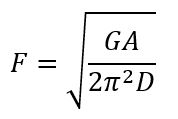Learn about vibration shaker testing with our recorded webinar and discover:
- The history of LDS Shaker Systems
- Shaker testing and theory
- Required vibration testing equipment and systems set up
- Common-practice shaker testing applications
- How to add additional value to shaker testing?
Presentation: An Introduction to Shaker Vibration Testing (PDF)
Webinar presenter
BRIAN ZIELINSKI-SMITH
Has an Bachelor of Science with Honours in Engineering Design. He joined Brüel & Kjær in 2016 (based in Royston, UK) and is our Product Manager for Shakers & Amplifiers and Shaker Systems.
E-mail: [email protected]
- Material preference is aluminium or magnesium alloys for strength to mass ratio and good damping properties
- Low mass, high stiffness and a minimum thickness of 20 mm
- Specified flatness tolerance and a good balance/C of G
- All interface hole patterns should incorporate counterbored holes, which allow for a flat washer and cap head screw/bolt
- Steel inserts should be used for interface to Jig
- 100 mm minimum hole spacing, in a square pattern where possible and consider how to control and where to position the accelerometers using 10/32 threaded holes

- Random-on-Random: narrow bands of noise sitting on a broader band of random energy
- Sine-on-Random: single tracked pure sine frequencies sitting on a broader band of random energy

Iscriviti alla nostra Newsletter e ricevi le informazioni più recenti dal mondo del suoni e delle vibrazioni



